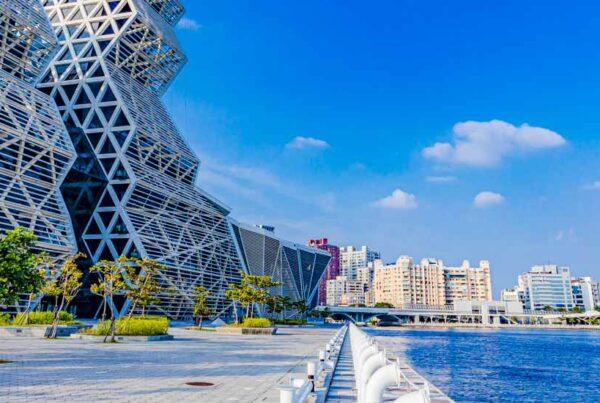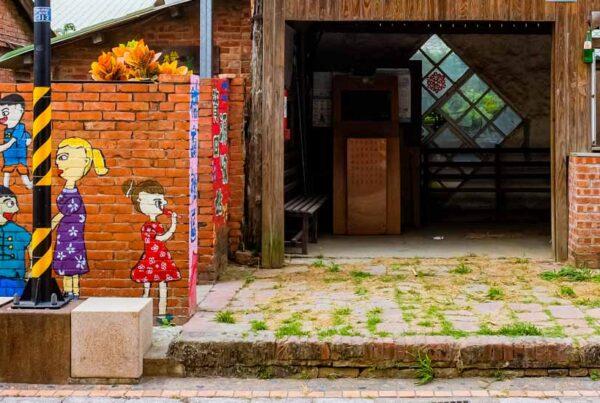Linluo (麟洛) & Neipu (內埔)
Linluo and Neipu are located in the north of Pingtung County; the two areas are quite flat and have mostly plain terrain. Linluo belongs to the “Front Settlement” area of the Hakka Liudui (“Six Settlements”) and most of the people living here are Hakka. Neipu is the largest township in Liudui, has unique Hakka cultural and architectural characteristics and is also where the well-known Liudui Hakka Cultural Park is located.
Linluo Wetland Park (麟洛濕地公園)
Not far from Liudui Hakka Cultural Park, this is a park where ecological engineering techniques are used to purify the water. Two thousand tons of water are processed every day in the 3.5-hectare park. It has a well-planned botanical garden, an ecological pond, a railway sleeper trail, and viewing decks. With only a limited number of buildings, it allows visitors to fully enjoy the beautiful natural scenery.


Getting There: From Pingtung Railway Station take bus no. 8230 or Taiwan Tourist Shuttle bus no. 508 (Northern Pingtung Shuttle Bus) and get off at Liudui Hakka Cultural Park (六堆文化園區) bus stop.
Longquan Tourist Brewery (龍泉觀光啤酒廠)
Situated in Neipu Township’s Dongning Village and covering an area of 8.6 hectares, this was Taiwan’s first private brewery. Visitors can observe the production process and sample beer, and there is also an exhibition room that introduces you to the history of beer and exhibits related cultural relics. The brewery also has a beer-themed restaurant that serves Hakka food and traditional Taiwanese cuisine. Secondary products such as beer pig’s knuckle, beer eggs, and beer sausages can also be tasted.


Add: No. 448, Beining Rd., Neipu Township, Pingtung County
(屏東縣內埔鄉北寧路448號)
Tel: +886-8-769-2976
Hours: 8:00-17:00
Getting There: From Pingtung Railway Station take bus no. 8231 and get off at Taixin Factory (台新工廠) bus stop.
Liudui Hakka Cultural Park
(六堆客家文化園區)
This park, located in Neipu Township, was established to preserve and display the life scenes of the Hakka settlements of Kaohsiung City and Pingtung County and, by doing so, promote tourism and drive local economic development. The park covers an area of around 30 hectares; a distinctive feature is the shade-giving structures in the shape of Hakka bamboo hats (douli).


The park’s themes are rice growing and tobacco and it has traditional buildings including a tobacco drying shed and kitchen that are used as cultural experience spaces. Visitors can see how tobacco was collected and dried in the tobacco drying sheds in earlier days; in the rice mill traditional rice milling machines can be seen. You can also experience wearing the traditional Hakka blue shirt. If tired and hungry, enjoy a meal of traditional Hakka dishes in the restaurant.


The park is highly suitable for family visits; it has an outdoor slide, paddling pool, sandpit, and lawn. There is a children’s hall inside where children can learn about the traditional industries and culture of Hakka settlements through role play.
Add: No. 588, Xinyi Rd., Neipu Township, Pingtung County
(屏東縣內埔鄉信義路588號)
Tel: +886-8-723-0100
Hours: 9:00-17:00, closed on Wednesday
Getting There: From Pingtung Railway Station take bus no. 8230 or Taiwan Tourist Shuttle bus no. 508 (Northern Pingtung Shuttle Bus) and get off at Liudui Hakka Cultural Park (六堆文化園區) bus stop.
For more about the Liudui Hakka Cultural Park, read: LIUDUI HAKKA CULTURAL PARK in Pingtung County
Zhutian (竹田)
Zhutian Railway Station is a small station on Taiwan Railways’ Pingtung Line. There are no busy streets, just the warm southern Taiwan sun and nostalgic scenery. When visiting Zhutian, first checking out the traditional wooden railway station is suggested; then visit the nearby old houses to learn about the various human stories, and also enjoy local food.
Getting There: From Zhutian Railway Station, walk to the places of interest.
Zhutian Railway Station Park (竹田驛園)
Today’s Zhutian Railway Station is a modern building, however, the old wooden station bearing the marks of time still stands at the side. Built in 1919, the old station has been renovated and, together with the railway warehouse and adjacent green space now forms the Zhutian Station Park. It is full of cultural relics from yesteryear, such as a well and bathhouse from the Japanese colonial period.

As well as the station building, the park also houses the Lee Xiu Yun Photography Museum, Dr. Ikegami Ichiro Memorial Library, a products hall, and a restaurant. The entire park exudes an old-time aura and it is very popular with railway enthusiasts and photographers. It’s a place for quiet exploration and worth spending half a day at.
Add: No. 23, Fengming Rd., Zhutian Township, Pingtung County
(屏東縣竹田鄉豐明路23號)
Dr. Ikegami Ichiro Memorial Library
(池上一郎博士文庫)
Dr. Ikegami Ichiro was posted to Zhutian Military Hospital as director during World War II. As well as treating servicemen, he also took care of local people on a voluntary basis and was well-loved and respected. In 2001, at the age of 90, he donated his book collection and established this library in his second home, Zhutian. Said to be the southernmost Japanese library in Asia, it has become a venue for Taiwan-Japan friendship events.


Add: No. 123, Zhongzheng Rd., Zhutian Village, Zhutian Township(屏東縣竹田鄉竹田村中正路123號
Tel:
Hours: 8:30-11:30, 14:00-16:30; weekends and holidays 8:30-11:30; closed on Monday
Lee Xiu Yun Photography Museum
(李秀雲先生攝影紀念館)
Mr. Li was a Hakka, born in 1919, who came into contact with photography as an adolescent but only bought his first camera at the age of 45. From this time on, he began recording the lives of the ordinary people and became a renowned local culture photographer. The memorial hall, housed in a former railway warehouse, has a large number of photographs; full of human warmth, they show life scenes from times gone by and allow the viewer to become acquainted with traditional Hakka culture, rural village scenery, and traditional customs and festivals.


Add: No. 123, Zhongzheng Rd., Zhutian Village, Zhutian Township, Pingtung
(屏東縣竹田鄉竹田村中正路123號)
Tel: (08) 771-1550
Hours: 7:00-20:00
Yamato Coffee (大和頓物所)
Located right in front of Zhutian Railway Station, this coffee shop is housed in a converted rice mill from the 1940s. The owner has cleverly retained the marks of time inside and out and has used a large number of floor-to-ceiling windows to create a space with a derelict style and open feel that has become a popular spot to check in on social media. As well as coffee, tea, slushies, bagels, and other snacks, coffee beans roasted in-house are sold.
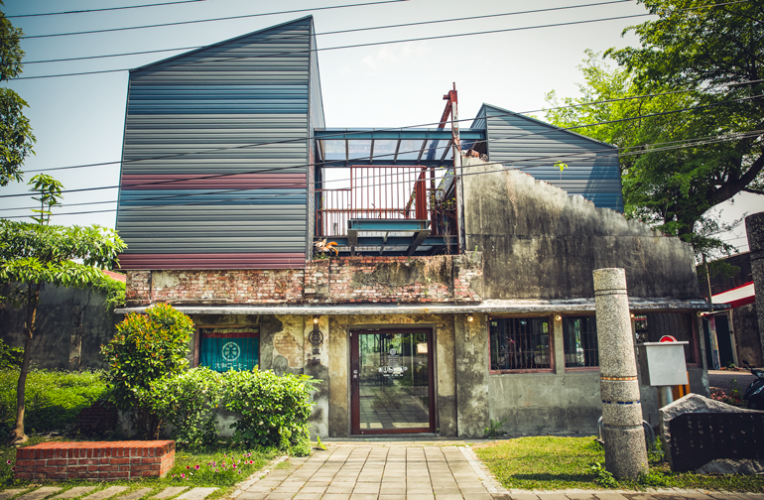


Add: No. 26, Fengming Rd., Zhutian Township, Pingtung County
(屏東縣竹田鄉豐明路26號)
Tel: +886-8-771-2822
Hours: 9:30-18:30
Doyoubo Soy Sauce (豆油伯純釀醬油)
With its strong sunlight and good water quality, Zhutian once had dozens of soy sauce factories. Today, there the Doyoubo Soy Sauce factory on Fengzhen Road. The founder had worked at the largest local soy sauce factory as a young man and set up his own factory in 1972 out of a desire to make soy sauce that retained the natural bean flavor. In recent years, the baton has been passed to the second generation. With an emphasis on using no pesticides and no genetically modified soy beans, the Douyobo brand has won rave reviews. Its black-bean ice cream, served with a few drops of soy sauce on top to add to the flavor, is very unique.



Add: No. 2-8, Fengzhen Rd., Zhutian Township, Pingtung County
(屏東縣竹田鄉豐振路2-8號)
Tel: +886-8-771-1116
Hours: 9:00-17:00
Chaozhou (潮州)
Chaozhou Township is located in the center of Pingtung County; it is second in population only to Pingtung City. After the railway tracks were elevated, Chaozhou Railway Station became a modern station, the county’s second largest behind Pingtung City’s. Walking a few minutes from the station, you can reach the oldest local street. Most of the buildings here retain their original appearance, giving you a nostalgic glimpse into how people lived in times gone by. The old street is a place to explore traditional stores and taste local food.
Getting There: From Chaozhou Railway Station, walk to the places of interest.
Chaozhou Old Street (潮州老街)
Chaozhou Old Street is on Jianji Road. This was the locations from which Chaozhou developed. Following the street you will come to Sanshan Guowang Temple, a local belief center from the Qing dynasty, as well as traditional rattan product, furniture, and printing stores and other long-established businesses. There is a narrow lane that leads from the street to Changxing Road; it is known by locals as “breast touching lane” and, just 1.2 meters wide, it is said that it was a popular dating spot in earlier times.

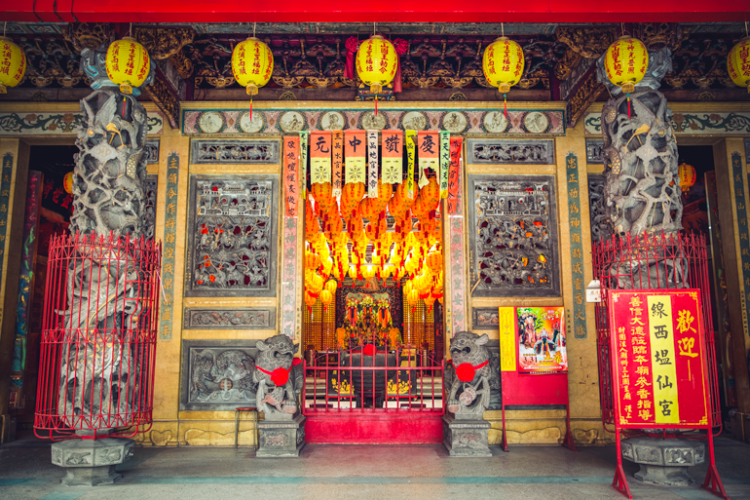
Sanshan Guowang Temple (三山國王廟)
Add: No. 83, Xishi Rd., Chaozhou Township, Pingtung County
(屏東縣潮州鎮西市路33號)
Continue further down, and you will come to the the Taiwanese Opera and Puppet Museum in Pingtung. Originally a post office in the Japanese colonial period, today this is an exhibition space that introduces visitors to local traditional arts.

Taiwanese Opera and Puppet Museum in Pingtung (屏東戲曲故事館)
Add: No. 58, Jianji Rd., Chaozhou Township, Pingtung County
(屏東縣潮州鎮建基路58號)
Hours: 9:00-17:00, closed on Monday
The Old Street has quite a few unmissable snacks. In business for more than 50 years, Lin Yao-hui Herbal Tea is beside Sanshan Guowang Temple. The family of the owner’s wife ran a medicinal herb store and helped develop its distinctive herbal tea. The exclusive pure medicinal herb formula and insistence on traditional cooking method combine to create a herbal tea that is free of the bitterness often found in herbal teas sold elsewhere. It is also sweeter and more refreshing.



Lin Yao-hui Herbal Tea (林耀輝青草茶)
Add: No. 33-5, Xishi Rd., Chaozhou Township, Pingtung County
(屏東縣潮州鎮西市路33-5號)
Hours: 8:30-22:00
Chaozhou Green Tunnel (潮州綠色隧道)
Located next to Bada Forest Paradise, this is a one-kilometer long walking path lined by almost 500 Madagascar Almond trees that embrace walkers on the path. The green tunnel is regarded as the most beautiful in southern Taiwan and attracts many photographers who make a special trip to take photos of it. Even in the height of summer, the shaded road remains cool, making it well-suited for afternoon strolls, jogging, or riding a bicycle. At times special-product stalls can also be seen along the road.

Location: Chaozhou Rd., Chaozhou Township, Pingtung County (屏東縣潮州鎮潮州路)
Getting There: From Chaozhou Railway Station take a taxi (about 10 minutes).
Chaozhou Ai Niu (潮州Ai Niu)
Located in a 60-year-old house, Ai Niu is a café quite well-known locally. When the house was renovated, the owner retained its layout and decorated its interior to give it a loft style. The mix of old and new is perfect and makes visitors want to linger. Puddings, puffs, and waffles are the popular snacks, especially the puffs which are sold out almost as fast as they leave the oven; latecomers will be disappointed.


Add: No. 45, Changxing Rd., Chaozhou Township, Pingtung County
(屏東縣潮州鎮長興路45號)
Hours: 13:00-18:00, closed on Monday
A-Lun’s Ice Shop (阿倫冰店)
This is an ice shop that is very well-known locally. Its ice appears to be ordinary shaved ice but the glutinous rice balls, mung beans, taro and other accompaniments hidden beneath the ice are steaming hot. The taste sensation of hot and cold is special. A-Lun’s opened in 1964 at the side of the road at Yanping Road circle, the busiest spot in Chaozhou. The old shop is full of reports from newspapers and magazines it has featured in, showing its renown and appeal. When eating hot ice, it’s best to start from the bottom and quickly find the glutinous rice balls or they will harden if left in the ice too long.


Add: No. 149, Xinsheng Rd., Chaozhou Township, Pingtung County
(屏東縣潮州鎮新生路149號)
Hours: 9:00-22:50
Chaozhou Wenji Meat Balls (潮州文記肉圓)
Meat balls, consisting of a pork filling in a chewy shell, are a commonly seen snack in Taiwan. In terms of preparation method, in northern Taiwan they are deep fried, while in the south they are steamed. The meat balls of Chaozhou are amongst the finest of the steamed variety. Chaozhou has quite a few meat ball shops; well-known Wenji Meat Balls is on the Old Street. Its meat balls aren’t big, but they are cheap and when eaten together with a bowl of pig blood soup they provide big satisfaction for a small amount of money.



Add: No. 177, Jianji Rd., Chaozhou Township, Pingtung County
(屏東縣潮州鎮建基路177號)
Hours: 10:00-19:00
Wanluan (萬巒)
To the northeast of Chaozhou Township, Wanluan Township is a place with a mixed Minnan and Hakka population. It’s a quiet and uncomplicated agricultural township the railway does not even reach but it is home to the historic Wanjin Basilica of The Immaculate Conception, Wushuigou Village, and other historic sites. When Wanluan is mentioned, many people will think of tasty pig’s knuckles that are braised in soy sauce until they are glossy. The uniquely flavored meat is the best-known local dish and should not be missed when visiting Wanluan.
Wugoushui Village (五溝水聚落)
This predominantly Hakka village was the first Hakka settlement designated by the Cultural Heritage Preservation Act. It has more than a dozen well-preserved Hakka buildings and is a small village with a historic air and lots of charm. Wugoushui’s name comes from the abundant local ground water; natural springs, water channels, and wetlands can be seen around the village, with the houses mainly along the banks of the water channels.
There are quite a few old houses in the village and precious historic sites such as the Liu Family Ancestral Hall, a Hakka courtyard house that is over 100 years old;

Guan Hai Shan Fang, a school that once nurtured local talent; the Half-moon Pond, which has water storage and flood prevention functions; and the Zhong and Wu family old houses. Adding the village wetland and stream ecology, Wugoushui is ideal for one-day history and ecology trips.

Liu Family Ancestral Hall (劉氏宗祠)
Add: No. 70, Xisheng Rd., Wugou Village, Wanluan Township, Pingtung County
(屏東縣萬巒鄉五溝村西盛路70號)
Getting There: From Chaozhou Railway Station take a taxi (about 20 minutes).
Wanjin Basilica of the Immaculate Conception
(萬金聖母聖殿)
The main building of this church was constructed in 1870 by Spanish missionaries and was rebuilt in 1960. It is Taiwan’s oldest church with a white exterior that mimics the Spanish fortress architectural style. The old bronze bell and palanquin in the bell tower are precious cultural relics shipped from Spain 100 years ago. The church was designated a basilica by Pope John Paul II. A large number of believers attend the Holy Mother procession that is held on the second Sunday every December and the annual Christmas Mass.

Add: No. 24, Wanxing Rd., Wanluan Township, Pingtung County
(屏東縣萬巒鄉萬興路24號)
Getting There: Take a taxi from Chaozhou Railway Station (about 20 minutes); or, from Pingtung Railway Station, take bus no. 8235 and get off at Wanjin Church (萬金教堂) bus stop.
Wanluan Suspension Bridge (萬巒吊橋)
With a length of 168 meters this bridge is now only open to cyclists and pedestrians. The bridge spans the confluence of the Jiaping and Donggang rivers and offers expansive views, with Mt. Beidawu visible in the distance. This is also a popular birdwatching spot. Another special feature of the bridge is that it is adorned with many 3D paintings that attract visitors and make it a favorite spot to take photos.

Wanluan Pig Trotters (萬巒豬腳)
Braised pig trotters started to become popular over 40 years ago and have become almost synonymous with Wanluan. Hai Hon Restaurant and Lin Family Pig Trotters, both run by the Lin family, were the first to sell the dish. There is even a “pig trotter street” with many specialty stores in the area of Minhe Road and Baozhong Road.
The pig trotters of Wanluan are so tasty because of how they are prepared and cooked. The trotters are first washed in cold water, then braised in a mix of soy sauce and various Chinese medicinal herbs; the end result is trotters with a glossy amber color and pleasantly chewy skin, flesh and tendon that are not in the slightest big greasy. They are delicious both hot and cold.

Hai Hon Restaurant (海鴻飯店)
Add: No. 132, Baozhong Rd., Wanluan Township, Pingtung County
(屏東縣萬巒鄉褒忠路132號)
Hours: 10:30-19:30

Lin Family Pig Trotters (林家豬腳)
Add: No. 1-4, Minhe Rd., Wanluan Township, Pingtung County
(屏東縣萬巒鄉民和路1-4號)
Hours: Weekday 8:00-18:00; weekend/holiday 8:00-19:00
Darenwu Restaurant (大人物餐廳)
Add: No. 17-1, Minhe Rd., Wanluan Township, Pingtung County
(屏東縣萬巒鄉民和路17-1號)
Tel: +886-8-781-0240
Hours: 9:00-14:00, 17:00-20:00; closed on Monday
For more about the Wanluan District, read: Bucolic Countryside: WANLUAN in Pingtung County
Jiadong (佳冬)
Jiadong is on the southwest coast of Pingtung County and has a mainly Hakka population, with Minnan the next largest group. It belongs to the “Left Settlement” of the Hakka Liudui (“Six Settlements”) of the Kaohsiung-Pingtung area. The main industries here are agriculture and fishing. Jiadong is an uncomplicated small coastal town with many traditional buildings such as the Xiao Family Old Residence and Buyue House. Most of the tourist attractions are in the area of Jiadong Old Street near the railway station. Touring Jiadong on a bicycle is suggested to take in its small-town charm at a leisurely pace.
Getting There: From Jiaodong Railway Station walk or ride a bike to places of interest.
Jiadong Old Street (佳冬老街)
Also called Qinan Old Street, almost all the buildings here are old, with brick Western-style buildings and wooden buildings from different periods and Hakka buildings such as the Xiao Family Old Residence, Jingzi Pavilion, and Sanshan Guowang Temple forming a historic-building cluster. The Old Street still has traditional businesses, such as a rice mill, a bicycle shop, a general-goods store, a quilt shop, and a rice noodle restaurant. It exudes an old-time life feel and is loved by travelers who like nostalgia.
Xiao Family Old Residence (蕭家古厝)
Due to its location on the coast and its fine harbor, Jiadong flourished for a time economically and attracted many people. As many early Hakka settlers made their fortunes in business and quite a few families became rich, building majestic grand houses and ornate ancestral halls locally, Jiadong has more splendid houses than any other Hakka township. The most important of these is the Xiao Family Old Residence.

The residence covers an area of more than 4,000 square meters and has more than 50 rooms that could accommodate almost 100 people. The building materials were specially shipped over from mainland China when the residence was built, and great care was taken in terms of layout and detailed decoration. The beauty of traditional Hakka houses can be seen at every turn.

Add: No. 150, Gouzhu Rd., Jiadong Township, Pingtung County
(屏東縣佳冬郷溝渚路150號)
Tel: 0932-200-024
Hours: 9:00-12:00, 14:00-17:00, closed on Monday
Buyue House (步月樓)
Located behind the Xiao Family Old Residence, this was the Xiao family study and library and also the eastern entrance of the complex. Although it’s only a small building in a corner of the residence, its decorations are splendidly ornate; there are sculptures of egrets, lotuses, and branches on the roof ridge that symbolize the hope for success in the imperial examination and qilin and magpie decorations that are also auspicious symbols of good luck and peace.

Liudui Poet’s Path (六堆詩人步道)
Located next to Xiao Family Old Residence this path has a strong literary flavor. Liudui Poet’s Path connects many historic buildings in Jiadong; poetry by various poets from the Liudui area has been written on the walls of the houses along the way and the walls were color painted by local artists. Various patterns with Hakka imagery combine literature, art, and the old street to perfection.

West Gate (西柵門)
In 1811, the residents of Jiadong built four gates – the North, South, East, and West gates – through which people traveled into and out of the small town. The West Gate, located on Donggen Road, is the best-preserved of the four. Over 200 years old, it is a county-listed historic site. The two characters “bao zhong” (“honor the loyal”) on the gate tower were conferred by the Qianlong Emperor in the late Qing dynasty, and there are also patterns of sacred beasts with dragon heads and bat bodies thay are very unusual.

Xiao Family Bantiao (蕭家粄條)
Bantiao rice noodles are a traditional Hakka food. There are quite a few places selling rice noodles in the township but Xiao Family Bantiao is best known. It is now run by the third generation. Due to Jiadong’s proximity to the sea, the rice noodles have a different taste to those in other Hakka settlements. Locals like to add tuna to the minced pork sauce that is served on the rice noodles and even the broth is made by boiling tuna, giving the rice noodles the sweet taste of the sea.
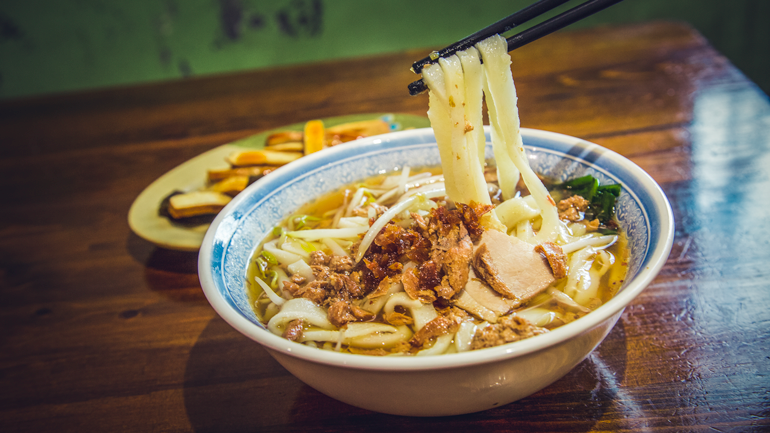
Add: No. 97, Jiahe Rd., Liugen Village, Jiadong Township, Pingtung County
(屏東縣佳冬郷六根村佳和路97號)
Hours: 6:00-13:00
Traveling Further - Linbian (林邊)
Kufuliao Park (苦伕寮公園)
This is a park not far from Linbian Railway Station that was a recreational center for railway workers in the Japanese colonial period and is now jointly maintained by local residents. The park has wooden single-story buildings and locomotives from earlier times, installation art made from driftwood, as well as painted walls that exude childish fun. Look up from the park and you can see trains slowly entering Linbian station on the nearby elevated tracks.
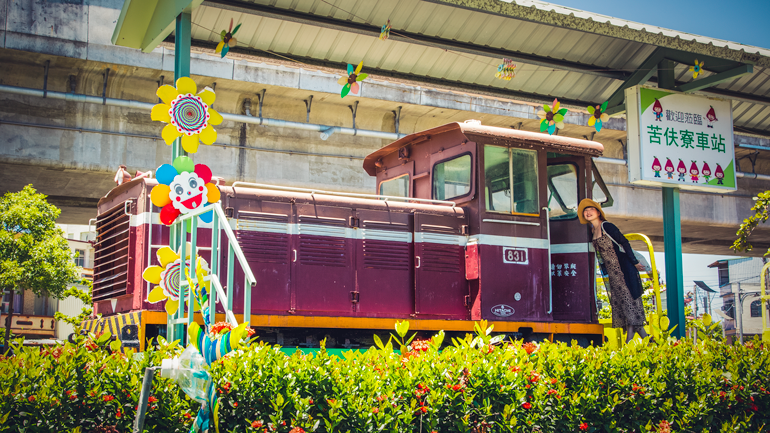
Add: Ren’ai Rd., Linbian Township, Pingtung County (屏東縣林邊鄉仁愛路)
Getting There: From Linbian Railway Station it’s a 5-min. walk.
Fuji Old Residence (福記古厝)

Add: No. 8, Rongnong Rd., Linbian Township, Pingtung County
(屏東縣林邊鄉榮農路8號)
Hours: 8:00-17:30
Traveling Further - Donggang (東港)
Dapeng Bay (大鵬灣)
Dapeng Bay is a vast natural lagoon covering 532 hectares. It was once used for oyster farming and the oyster racks and the small islands formed by accumulated oyster shells can still be seen. In 2003, Dapeng Bay National Scenic Area was established here. It has complete leisure facilities and a nature reserve. There are military remains that exude a historical atmosphere, and the various land and water-based activities are highly developed.

Dapeng Bay National Scenic Area Administration (大鵬灣國家風景區管理處)
Add: No. 169, Datan Rd., Donggang Township, Pingtund County
(屏東縣東港鎮大潭路169號)
Tel: +886-8-833-8100
Getting There: From Taiwan High-Speed Rail’s Zuoying Station, take Taiwan Tourist Shuttle bus no. 9189 (Kenting Express Line) and get off at Dapeng Bay (大鵬灣) bus stop.
Huaqiao Market (華僑市場)
Donggang is an important fishing harbor in southern Taiwan that oozes fishing harbor charm. Huaqiao Market is an evening market beside the Donggang Ferry Terminal; covering an area of around 460 square meters, it has more than 400 stalls selling a wide variety of fresh fish and other seafood. Known for selling good-quality fish at reasonable prices, it is the largest retail fish market in Pingtung. It also has restaurants where fresh seafood dishes can be enjoyed.

Add: No. 39, Zhaolong Rd., Donggang Township, Pingtung County
(屏東縣東港鎮朝隆路39號)
Hours: 11:00-20:00; closed on first Tuesday each month
Getting There: From Dapeng Bay, take bus no. 503 and get off at Donggang Ferry Pier (東港渡船碼頭) bus stop.
Pingtung (屏東)
Fangliao (枋寮)
Situated where the Pingtung Plain meets the Hengchun Peninsula, Fangliao is a small fishing village with tropical charm. A visit to Fangliao should focus on the area around the railway station, not far from which is an art village that formerly consisted of railway warehouses and dormitories. Fangliao also has a fishing harbor where tasty seafood dishes can be enjoyed. There aren’t many attractions but this is a pretty and uncomplicated small town that is worth a visit to quietly view the sea scenery while enjoying the sea breeze.
Getting There: From Fangliao Railway Station, walk to the places of interest.
Fangliao Railway Art Village (枋寮鐵道藝術村)
Fangliao Railway Station is the last stop on the Pingtung Line, which is part of the Western Trunk Line. The art village, located next to the station, is also called Fangliao F3 Arts Special Zone, “F3” derived from Fangliao and the No. 3 Warehouse. Formerly there were warehouses and dormitories of Taiwan Railways Administration here; after being idle for years, they were taken over and renovated by the local government, the village becoming a venue for holding arts exhibitions on an irregular basis; artists have been invited to take up long-term residence. There are numerous installation art works on display as well as large-scale landscape paintings, making it interesting to explore and taking photographs. There is also a studio that provides mosaic collage and other experiential DIY courses. A café in a former dormitory is run by the nearby Fangliao Hotel and serves meals and coffee roasted in-house, tea, and cakes and pastries.
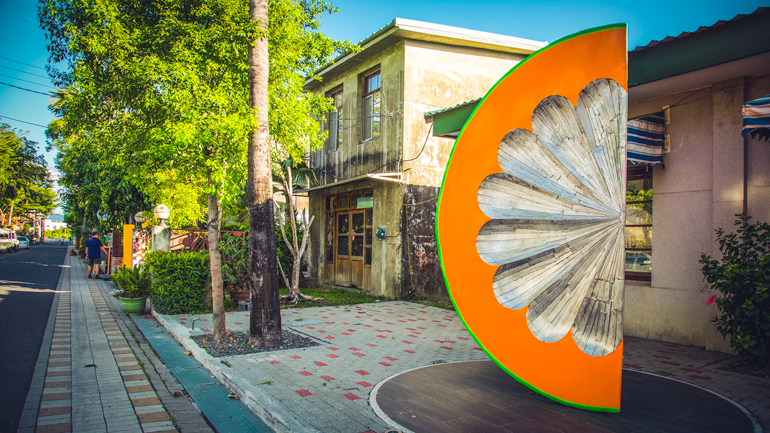
Fangliao Railway Art Village (枋寮鐵道藝術村)
Add: No. 15, Chuyun Rd., Fangliao Township, Pingtung County
(屏東縣枋寮鄉儲運路15號)
Tel: +886-8-878-4293
Hours: 9:00-17:00, closed on Monday
Fangliao Fishing Harbor (枋寮漁港)
It takes about 10 minutes to walk to Fangliao Fishing Harbor from the railway station. There is a seafood supermarket operated by the harbor administration in which fishermen sell various fresh fish and other seafood for reasonable prices. The nearby restaurants will cook what is bought there for customers. As the harbor is the main production center for whitebait, various snacks made using whitebait can often be seen.

Run by the founder’s second generation, well-known Yu He Whitebait Pancake is next to the harbor. The house special pancake is packed with whitebait, each bite filling the mouth with the taste of the sea, and should not be missed when visiting Fangliao.
Yu He Whitebait Pancake (玉合魩仔魚煎)
Add: No. 9, Haibian Rd., Fangliao Township, Pingtung County
(屏東縣枋寮鄉海邊路9號)
Hours: 9:00-19:00
If you fancy something ice cold, look no further than Gongbo Tofu Pudding, which sells tofu pudding, ice and other refreshing ice products. Due to the proximity to a mango growing area, the mango ice here is cheap, comes in a plentiful serving, and is good value for money.

Gongbo Tofu Pudding (港伯豆花)
Add: No. 177, Zhongshan Rd., Fangliao Township, Pingtung County
(屏東縣枋寮鄉中山路177號)
Hours: 11:30-21:30
Traveling Further - Fangshan (枋山)
Getting There: From Fangliao Railway Station take bus no. 8239, 9117, or 9188 and get off at Fangshan (枋山) bus stop.
Fangshan Recreational Farm (枋山休閒農場)
Situated halfway up a mountain, in mango season every year numerous protective white paper bags covering the mangoes that hang from the trees can be seen all over the mountain on which this farm is located. Subjected to the sea breeze, the mangoes grown here are famed for their sweetness. Visitors can have fun picking their own mangoes. The farm also has developed various tasty mango products, such as dried mango and mango popsicles.

Add: No. 3, Guozhong Rd., Fangshan Township, Pingtung County
(屏東縣枋山鄉國中路3號)
Tel: 0935-470-498
Fangshan Post Office (枋山郵局)
This is Taiwan’s first color-painted post office. The post office’s exterior has been transformed into a huge Chunghwa Post box (the kind used to mail things) and shrikes are painted on the walls rather than pigeons, which are normally associated with mail (shrikes are birds closely associated with Pingtung County). A cute shrike mail box also stands outside, it is a favorite place for visitors to check in on social media and take photos.


Add: No. 47, Jiuzhuang Rd., Fangshan Township, Pingtung County
(屏東縣枋山鄉舊庄路47號)
Also read about taking the railway on the South Link Line here: “Cruise Style” Rail Trips











